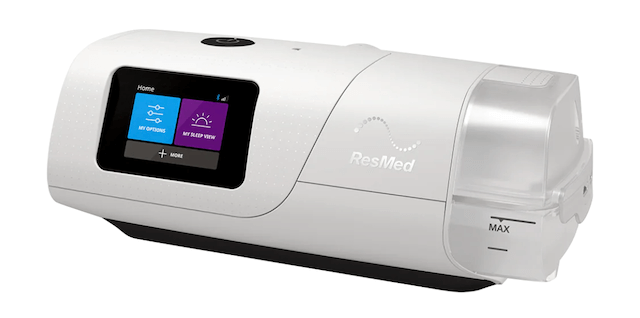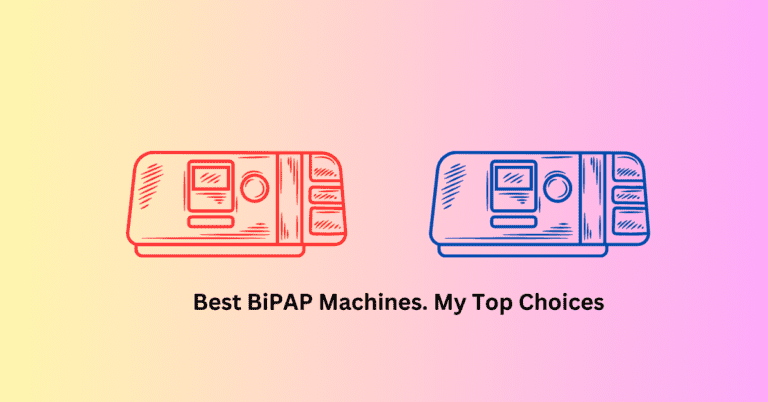CPAP Machines: One of these Saved my Life!
Jeremy Smith is a long-term CPAP user and sleep apnea advocate. After being diagnosed with severe obstructive sleep apnea, he created ByJeremySmith.com to help others navigate CPAP therapy through personal stories, gear reviews, and practical advice.
For anyone diagnosed with sleep apnea, one of the most common treatments prescribed is a CPAP machine.
While these machines can initially seem a bit overwhelming, they are one of the most effective ways to treat obstructive sleep apnea (OSA) and ensure you get the restful sleep you need.

I have first-hand experience because I’ve used a CPAP Machine for the last 7 years. I was diagnosed with severe obstructive sleep apnea, and this little machine has turned my life around and, I’m convinced, added years to my life.
To help people like you, I have built this blog to answer your sleep apnea questions and be your guide.
In this article about CPAP machines, I’ll cover everything you need to know, including how they work, the different types available, their benefits, and how to get the most out of your therapy.
Let’s jump in and ask: What is a CPAP machine?
What Is a CPAP Machine?
A CPAP (Continuous Positive Airway Pressure) machine is a medical device used to treat obstructive sleep apnea.
The machine delivers a continuous stream of air through a mask you wear while you sleep.
This steady airflow keeps your airway open, preventing the blockages that cause apneas (pauses in breathing). Thus, you can breathe more easily and get a full night of restful sleep.
How Does a CPAP Machine Work?
As I said, CPAP machines provide a constant stream of air pressure through a mask, ensuring your airway stays open during sleep. The key components of a CPAP machine include:
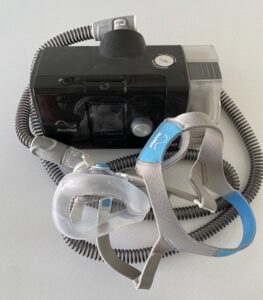
- The CPAP Unit: This is the central part of the machine that generates the airflow.
- The Mask: The mask covers your nose or both your nose and mouth, delivering air into your airway. Several types of CPAP masks include nasal masks, full-face masks, and nasal pillows.
- The Hose: A flexible hose delivers air from the CPAP unit to the mask.
- Humidifier (optional): Many CPAP machines include a built-in humidifier to add moisture to the air, making breathing more comfortable, especially in dry environments.
The steady airflow from the CPAP machine prevents your throat from collapsing, keeping your airway open and preventing apneas.
Who Needs a CPAP Machine?
CPAP machines are most commonly prescribed for people diagnosed with obstructive sleep apnea (OSA). A sleep study may be recommended if you experience excessive daytime fatigue, loud snoring, gasping or choking during sleep, or frequent awakenings.
If the study reveals sleep apnea, CPAP therapy is often the first line of treatment.
Before I got my CPAP machine, I experienced daily fatigue, constant energy crashes, and severe migraines. Once I started using my CPAP machine, I no longer woke up with a sore throat, my sleep quality and overall energy levels drastically improved, and I no longer suffered migraines.
Types of CPAP Machines
There are different types of CPAP machines, each designed to cater to specific needs. Here are the most common ones:
- Standard CPAP Machines provide continuous, fixed air pressure throughout the night. Once your ideal pressure setting is determined (usually during a sleep titration study), the machine is programmed to deliver that constant pressure.
- APAP Machines (Auto-Adjusting Positive Airway Pressure): Unlike CPAP machines, APAP machines adjust the air pressure automatically throughout the night based on your breathing patterns. This can be more comfortable for people whose pressure needs to change during the night.
- BiPAP Machines (Bilevel Positive Airway Pressure): BiPAP machines provide two different air pressure settings—one for inhalation and a lower one for exhalation. These machines are often prescribed for people with more complex or severe sleep apnea, or for those who find CPAP machines uncomfortable.
Choosing the Right CPAP Mask
Choosing the right mask is one of the most critical aspects of successful CPAP therapy. The three most common types of CPAP masks are:
- Nasal Mask: This mask covers only your nose and is ideal for people who breathe primarily through their nose while they sleep.
- Nasal Pillows: These small, lightweight masks sit directly at the base of your nostrils. They’re less intrusive and ideal for those who prefer minimal contact.
- Full-Face Mask: This mask covers both your nose and mouth and is ideal for people who breathe through their mouths during sleep or have nasal congestion.
Finding a mask that fits well and feels comfortable is crucial for successful CPAP therapy. A poor-fitting mask can lead to air leaks and discomfort, making it harder to stick with the treatment.
Benefits of Using a CPAP Machine
The benefits of using a CPAP machine are immense, especially for people with moderate to severe sleep apnea.
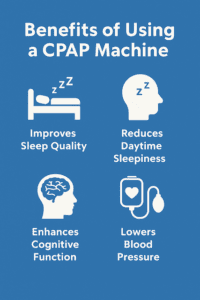
Some of the key benefits include:
- Improved Sleep Quality: CPAP therapy helps prevent the breathing interruptions that disrupt your sleep, allowing you to get deeper, more restorative sleep.
- Increased Daytime Energy: With better sleep, you’ll feel more refreshed and energetic during the day.
- Reduced Health Risks: Untreated sleep apnea is linked to serious health conditions like high blood pressure, heart disease, and stroke. CPAP therapy helps reduce these risks.
- Reduced Snoring: CPAP can drastically reduce or eliminate snoring, leading to a quieter, more restful night for both you and your partner.
In my case, CPAP therapy transformed my sleep. I no longer wake up feeling groggy or exhausted, and my daytime fatigue has virtually disappeared. It’s been a game-changer in terms of my overall health and well-being.
Tips for Getting the Most Out of Your CPAP Therapy
Using a CPAP machine takes some adjustment, but with the right tips, you can make the process easier and more comfortable:
- Start Slowly: If you’re struggling with the mask, try wearing it for short periods while you’re awake to get used to its feel.
- Maintain Your Equipment: Regularly clean your mask, hose, and CPAP unit to prevent bacteria buildup and ensure optimal performance.
- Use the Humidifier: If you find the air from your CPAP machine too dry, using the humidifier can greatly improve your comfort.
- Try Different Masks: If your current mask is uncomfortable or doesn’t fit well, talk to your doctor about trying a different style.
- Stay Consistent: It may take time to adjust, but consistently using your CPAP machine is key to experiencing the full benefits of therapy.
Common Problems and Solutions with CPAP Therapy
Like any medical treatment, CPAP therapy comes with its challenges. Here are some common issues and how to solve them:
- Mask Leaks: If air leaks from your mask, it may not fit properly. Try adjusting the straps or switching to a different style of mask.
- Dry Mouth or Nose: Using the humidifier feature can help reduce dryness. If this doesn’t work, talk to your doctor about adjusting the humidity settings.
- Difficulty Exhaling: Some people find exhaling hard against the constant air pressure. A BiPAP or APAP machine may be a better option in these cases.
- Discomfort: It can take time to get used to wearing a mask. Try different mask types or wear it during the day to help adjust.
Conclusion: Why CPAP Machines Are Essential for Sleep Apnea Treatment
A CPAP machine is one of the most effective treatments for sleep apnea. It helps improve sleep quality, reduce health risks, and restore energy levels. While adjusting to CPAP therapy can take time, the benefits far outweigh the initial challenges.
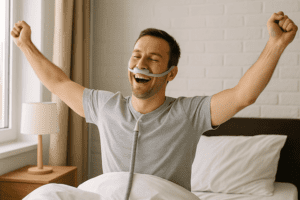
Using a CPAP machine has transformed my life. I no longer struggle with constant fatigue, and my overall health has improved dramatically.
Whether you’re just starting your CPAP journey or looking for tips to improve your therapy, knowing how these machines work and how to use them effectively is key to getting the most out of your treatment.
In the comments section below, let me know if you have any questions about CPAP machines.
Disclaimer: The content on this blog is for informational and educational purposes only and is not a substitute for professional medical advice. Always speak with your doctor or sleep specialist before starting, stopping, or changing any treatment or therapy related to sleep apnea or CPAP use.



